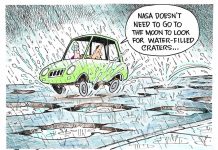By Robert Mixner
In his essay “The Creative Process,” collected in “The Price of the Ticket: Collected Nonfiction 1948-1985,” writer James Baldwin compares the artist to a scientist by saying, “He is his own test tube, his own laboratory, working according to very rigorous rules, however unstated these may be, and cannot allow any consideration to supersede his responsibility to reveal all that he can possibly discover concerning the mystery of the human being.”
We often think of the arts and sciences as separate. They seem to have different methods and different rules, and we call them different disciplines. If you favor one over the other, it is easy to feel your favorite has a discipline the other lacks. Perhaps “those scientists” can’t see creatively or with compassion, or “those artists” just don’t have the rigor required to carry out an experiment by the scientific method.
In reality, this is often not the case.
A writer such as Baldwin may draw his sense of purpose from the methodologies of science, even if he uses different tools to achieve his ends, while scientists such as Albert Einstein and Sir Isaac Newton achieved great insights through letting their minds wander. For more on Einstein and Newton, check out the recent book, “Solitude: In Pursuit of a Singular Life in a Crowded World,” by Michael Harris. Also, see “The Runaway Species: How Human Creativity Remakes the World,” by Anthony Brandt and David Eagleman. The introduction is titled, “What Do NASA and Picasso Have in Common?”
For every intuitive painter, there is one like Georges Seurat, whose pointillist paintings were strongly based in the way humans perceive color. See Michelle Foa’s “Georges Seurat: The Art of Vision” for an in-depth examination of the subject. If you wander into the right online forums for oil painters, you will discover amateur chemists throwing around terms such as “saponification” and “hygroscopic,” in an attempt to make better paintings.
Sometimes the arts can illustrate the way science works or serve as inspiration. “In Treknology: The Science of Star Trek from Tricorders to Warp Drive,” physicist Ethan Siegel writes about the theoretical science underpinning the various “Star Trek” series and movies, and how close — or far away — we are from those becoming real. For a physics-heavy exploration of the arts, take a look at “The Physics of Musical Instruments” by Neville Fletcher and Thomas Rossing.
Moreover, the library offers programing that covers the intersection of art and science, including a whole slate of STEAM programs for children and teens. While the more common acronym is STEM, for Science, Technology, Engineering, Mathematics, STEAM encompasses arts as well, with activities often incorporating building and creating.
Robert Mixner is a reference librarian at the Bartholomew County Public Library and can be reached at [email protected].




